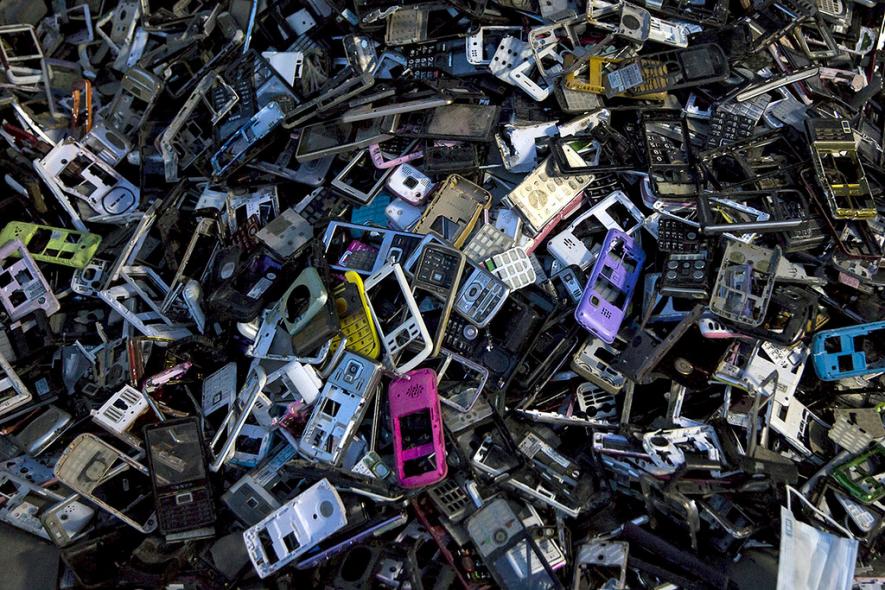Why Electronic Waste Is an Urgent Pollution Concern

The United Nations Environment Programme (UNEP) in 2019 stated that the world generates approximately 50 million tonnes of electronic waste (E-waste) per year, the weight of which is greater than all the commercial aircraft ever made. A recent report by the United Nations University (UNU) calculated that the volume of E-waste produced is equivalent to almost 4,500 Eiffel Towers and enough to form a line covering more than 28,000 km from New York to Bangkok and back!
Despite its unprecedented growth, especially during the last two decades, E-waste remains a pollution concern which is yet to be adequately talked about and thus, still an issue unfamiliar to majority of the global populace. In simple words, E-waste primarily signifies all the discarded or obsolete appliances that utilise electricity for functioning.
With the growth in consumer electronics market and the information technology (IT) revolution, E-waste emerged as a wicked by-product, intensifying quietly yet persistently. Sustainable management of E-waste is a major challenge that needs immediate attention from the scientific community, policymakers and civil society. It is essentially for the fact that E-waste is a toxic yet complex category of waste. It consists of heavy metals (such as mercury, lead, chromium, cadmium, etc.) and persistent organic pollutants, extremely harmful to human health and the environment. Not only the hazardous chemicals, E-waste is also a rich source of precious and valuable metals such as gold, silver, palladium, copper, etc. The presence of both toxic and valuable metals makes E-waste a complex waste stream necessitating cautious management mechanisms.
Management complicacies
While the per capita generation of E-waste is much higher in the developed countries, the absolute volume generated is significantly greater in the developing countries and emerging economies. For instance, a recent study by the United Nations University (UNU) mentioned that India produces less than 2 kg of E-waste per person per year whereas Switzerland generates more than 25 kg per capita. However, the absolute volume of E-waste produced in India is approximately eight times that of Switzerland which makes it one of largest generators of E-waste in the world. It is because of the fact that the Global South is predominantly characterised by a large population size with massive market potential.
Further, many developing countries serve as major destinations of imported E-waste from the global North. Although, the ‘Basel Convention on the Control of Transboundary Movements of Hazardous Wastes and their Disposal’, signed in 1989 and effective since 1992, prohibits this transfer of E-waste from the industrialised to the industrialising countries, the loopholes of this convention are effectively explored. For instance, many electronic equipment land in countries such as India, Nigeria, Ghana etc. in the name of ‘donation’ or ‘working equipment’. In reality, these are obsolete electronics or E-waste, being diverted directly to the informal recycling sites mushrooming in major cities of these countries. Thus, many countries from the Global South must take care of both their domestically generated and imported E-waste.
The informal E-waste recycling sites are known for intense water, soil, air pollution where a large number of workers are women and children, working without any health and safety measures. Currently, the formal E-waste recycling sector accounts for only 20% of the recycled E-waste. The greater domestic generation, (il)legal import, dominance of the informal recycling sector and inadequate formal recycling initiatives make sustainable management of E-waste a complicated task, especially in the developing countries and emerging economies.
A few probable solutions
Given the fact that the valuable metal concentrations in E-waste is much higher than that in the natural ores, a possible way forward is to treat E-waste as ‘urban mines’ and ensure infrastructural provisions towards attaining maximum benefit out of the same. At present, the metals essential for the production of electronic equipment are being mined at large scale in the Global South which has devastating environmental and social consequences. If the metals already present in E-waste are re-utilised for manufacturing of newer equipment, it will result in considerable reduction of environmental burden and will contribute towards a circular economy. Further, it is essential to devise and implement stringent policies to tackle the E-waste problem responsibly both at the global and local scale.
It is also essential to standardise the definition of ‘E-waste’. While the European Union’s definition of the term encompasses electrical and electronic equipment ranging from mobile phones, televisions, washing machines, ironing machines to medical devices, automated machines and electronic toys, the definition in countries such as India has a much narrower scope. Without a uniform definition, the complexities surrounding the management of E-waste only intensify.
From the current trend, it is evident that E-waste will continue its significant growth in the near future, especially in the Global South. Accordingly, a major challenge is to ensure adequate infrastructural provisions and policy approaches which are currently lacking in majority of the industrialising countries.
The author is a Marie Skłodowska Curie Postdoctoral Fellow at the Katholieke Universeitat in Leuven, Belgium. The views are personal.
Get the latest reports & analysis with people's perspective on Protests, movements & deep analytical videos, discussions of the current affairs in your Telegram app. Subscribe to NewsClick's Telegram channel & get Real-Time updates on stories, as they get published on our website.
























